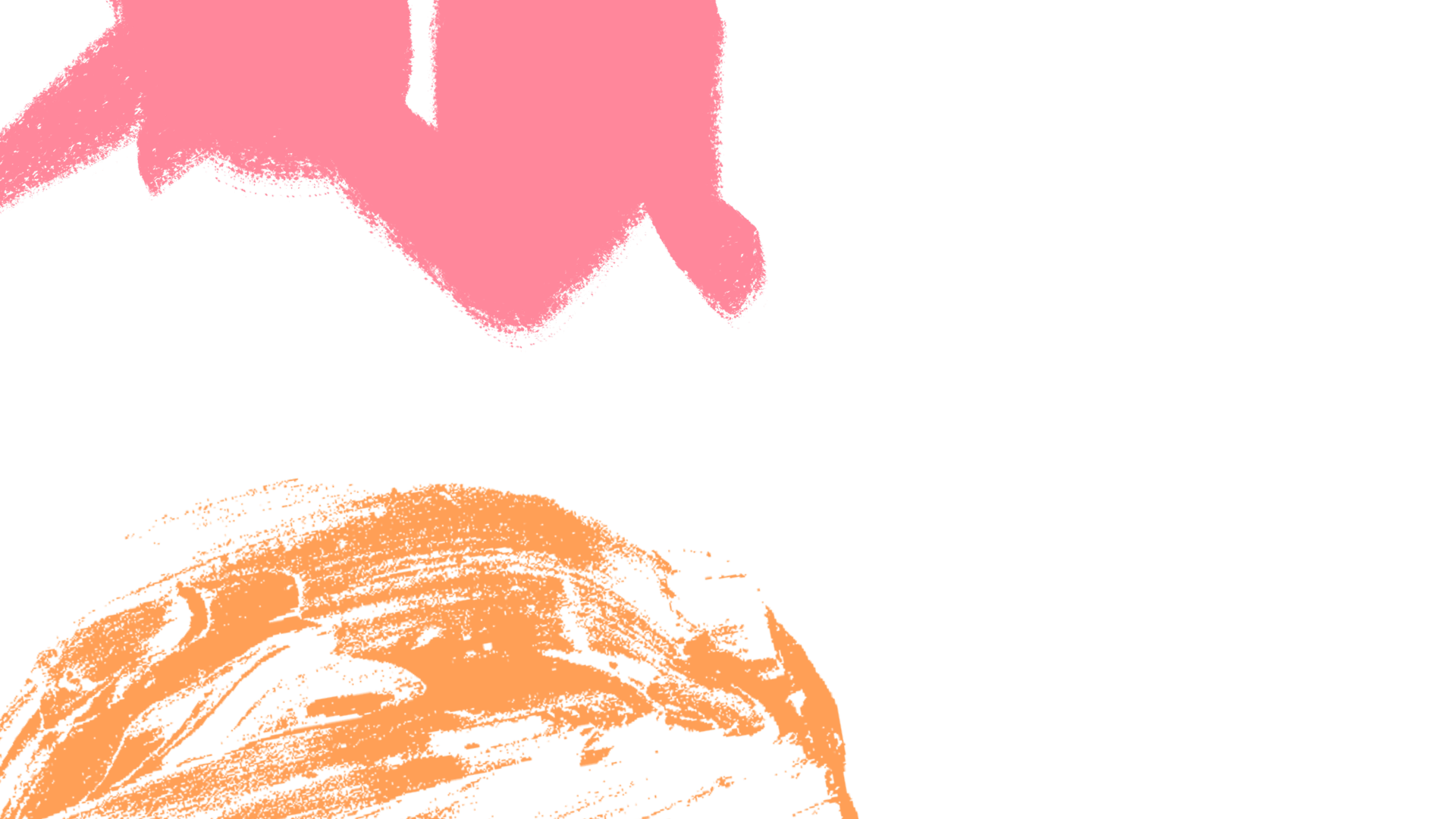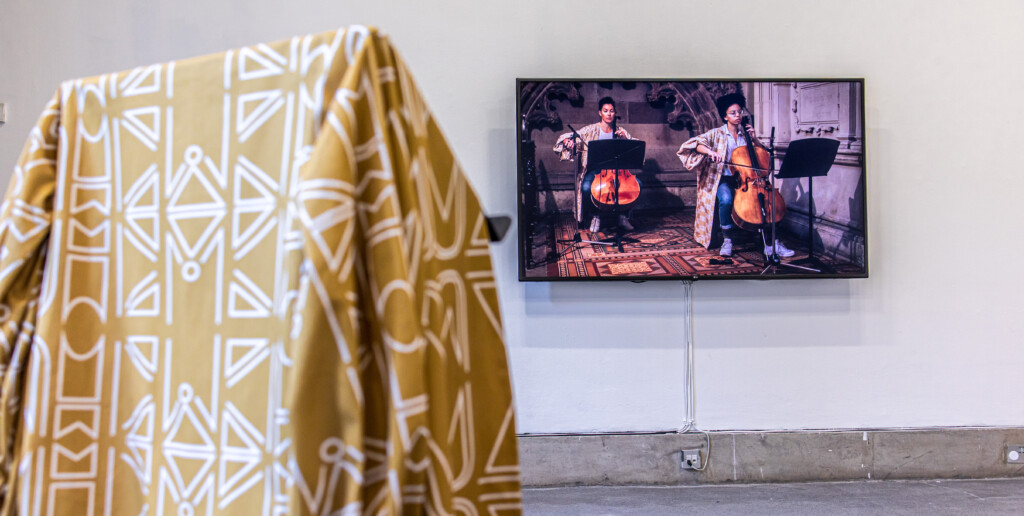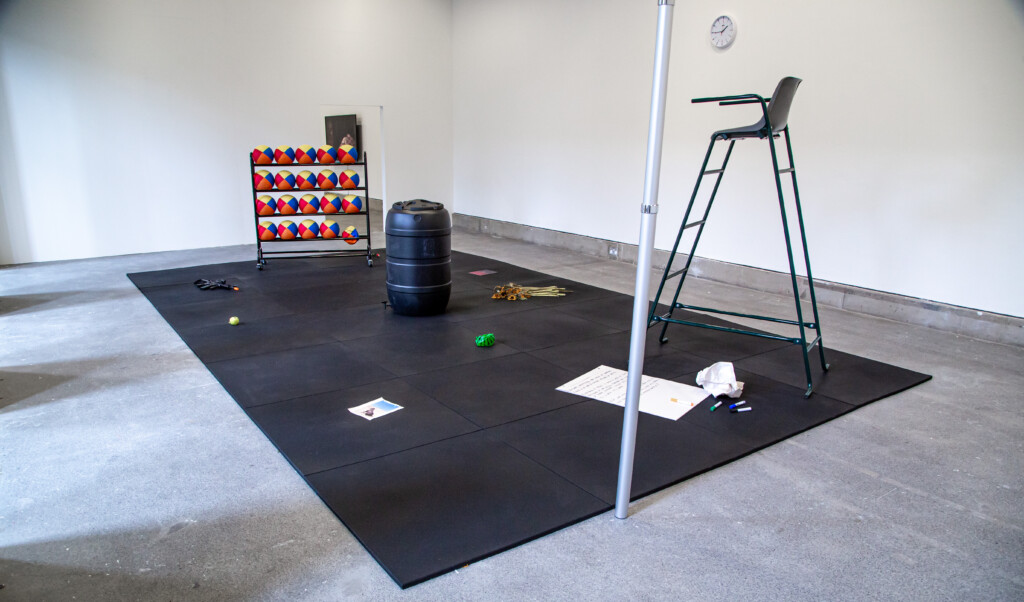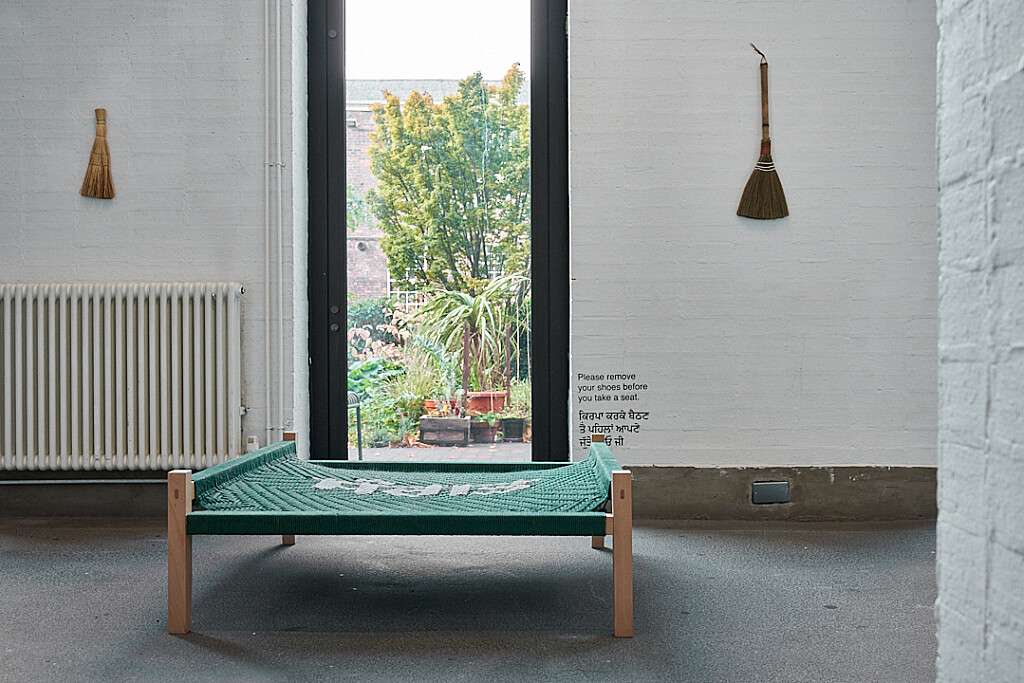The exhibition took the Bluecoat’s site history, originally a charity school for children in poverty built in 1716-17 with proceeds from the Transatlantic slave trade, as its starting point.
Referencing Keith Piper’s peer support curatorial strategy in the group exhibition, Trophies of Empire (Bluecoat,1992), breathe, spirit and life 呼吸、靈魂與生命 repurposed the gallery as a communal space for cleansing, detoxification and purification as a collective decolonial healing process. Together, the artists explored ideas in relation to Taoist practice of self-cultivation, meditation, rituals, and harmonisation with nature.
breathe, spirit and life 呼吸、靈魂與生命, was a group exhibition of six artists, including Soojin Chang (In collaboration with Georgie Rei-n Lo, Jade O'Belle, and Aditya Surya Taruna a.k.a. Kasimyn), Sulaïman Majali, Thulani Rachia, Roo Dhissou, Kiara Mohamed Amin and Emii Alrai. This exhibition was curated by our guest curator, Katherine Ka Yi Liu 廖加怡.
Soojin Chang presented “JADE BABY BAMBOO SPINE”, a film work examining themes of surrender, violence, pleasure and power. “JADE BABY BAMBOO SPINE” is an experimental ritual of sacrifice. It begins as a speculative leap that imagines a world where death practices from multiple geohistories (Korea, Taiwan, Tibet, Cornwall, and England) touch to bring transformations and frictions in ecological kinships and the concept of fate. With reference to Keguro Macharia’s work on the active role of desire in political imagination and political action, the desire to find belonging to and for Land functions “not simply as a sensation produced by colonial modernity, but as something that rubs along and against the constraints produced by colonial modernity.” The work was made in collaboration with Jade O’Belle, Aditya Surya Taruna a.k.a. Kasimyn, and Georgie Rei-n Lo.
Soojin Chang has withdrawn their work from the exhibition from Friday 6th January, 2023.
Sulaïman Majali brought into play rupturing, grieving and dreaming as methodologies of collapse. Majali is concerned with performance-led research as part of a thinking practice that extends to expansive ideas about writing, sculpture, film, sound, image, the studio and the role of art and the artist outside of state apparatus. Considering art as an already thinking and speaking thing, the artist performs towards poetic and conceptual strategies to undergo the liberatory or otherwise.
Majali presented ripe fruits before battle, a new work which takes its name from the last line of a poem handwritten on a flip chart pad in the gallery that plays between the northern hemisphere’s climatological seasons and political seasons. Also in the space was a device with a smashed screen that is charging at the wall. The device played a voice note out loud, a long form poem consisting of “i”: the first person pronoun transformed as both singular and plural and speech disfluencies: breaks, irregularities and non-lexical filler words such as “err”, “umm” and “like”. Other elements in the space included a water butt that performs a central fountain, a rack of dodgeballs, erm, a toy gun, dead sunflowers, an empty flagpole and an umpire's chair. ripe fruits before battle imagined an arena where various “things” play up/play out as signifiers, symbols, images, meanings and their embodiments, thinking critically about solidarity, selfhood, collectivity and decoloniality in what the artist refers to as a ‘clowning of community under capital through a poetics of the court’.
Thulani Rachia is a South African artist and educator based in Glasgow. Working through the legacies of the Apartheid regime and colonial rule, his work investigates how the built environment carries this history and shapes contemporary social relationships.
Rachia shared an iteration of his performance project, obuyile, a composition for four cellists. Bringing together a collection of melodies composed by the artist as they adjusted and settled into a range of different cities around the world, obuyile expresses a difficulty in articulating the brutality of the built environment and the inherent violent histories held in historically established architectures.
The first staging of obuyile took the form of an installation in Edinburgh’s St Giles Cathedral animated by regular performances. For this iteration at the Bluecoat, Rachia shared his seven day composition through seven video works. The performers’ garments are hung on music stands, just as they were in the Edinburgh installation during the moments when the performers were not present. The garments themselves have been designed by Rachia in collaboration with Asia Przytarska. The motifs and colour have been hand-drawn and mixed by Rachia. These elements form notations of a dream he had which inspired this project.
Together, Rachia’s new body of work draws on the psychological therapeutic impact of sound by creating an active dialogue between architecture, trauma, dreaming and composition.
Obuyile was first commissioned by Edinburgh Art Festival with support from the Scottish Government’s Festivals Expo Fund and EventScotland. For this new commission at the Bluecoat, Rachia has created an additional six video works.
Roo Dhissou is an artist and doctoral researcher who works with communities, diasporas and her own histories. Using socially engaged practice, craft, cooking, performance and installation she explores how communal and individual identities are formed. As part of the exhibition Dhissou presented a series of manjis, a punjabi woven structure which is essentially a 4 legged woven bed. A manji is not just a bed, but a place, a space, for reflection, for dining, for communal gatherings, for drying vegetables, spices or clothes, for sitting together, for rest, for meetings, and for lying under the stars. A manji is a space for community, for rest and for the commons, it belongs to the public and in various countries in the subcontinent is a symbol of civic space, familial and community culture.
Alongside the manjis was a collection of brooms collected from around the world, which borrow from their own local environments using materials native to their country of origin. The artist uses the brooms as a prompt to encourage us to learn more about one another and our homes, our differences, similarities and oppositions. Some brooms are handmade by the artist, some found and some gifted. Guest curator, Katherine Ka Yi Liu 廖加怡 gifted a broom from China via Hong Kong, as a form of collaboration with the artist.
Kiara Mohamed Amin is a trans, Somali multidisciplinary artist based in Toxteth, Liverpool. His work focuses on what it means to live at the intersectional of marginalisation and still choose joy, healing and community as an act of radical living and dreaming. He uses different mediums to explore intergenerational trauma and looks to see where we are in eternity.
Mohamed Amin showed Black Presence, a single channel film. The film is a eulogy to Black dreaming and ancestors, inspired by the death of Azeezat Johnson, a Black British feminist. This piece is a remembrance for Johnson and a call to awaken to the work of liberation within the self and community.
Black Presence is commissioned by GEM Research Collective, narrated by Kiara Mohamed Amin and Katucha Bento and co-written by Azeezat Johnson, Francesca Sobande and Katucha Bento.
Emii Alrai is an artist whose practice is informed by history, geography and mythologies through oral narratives and inherited nostalgia. Alrai’s installations subvert the traditional visual language of museum displays by weaving together expanded mythologies and oral histories which imitate archaeological artefacts. Often working at large scale, her installations mimic museological displays and how the body is situated against the rigidity of history to interrogate how collections and dioramas reinforce systems of empire.
An Ancient Quiver is an iteration of Alrai’s 2018 installation (first exhibited at GLOAM Gallery, Sheffield) which reimagines the gallery as a site of excavation, using cardboard tiles covered in plaster and sand as a backdrop. The space is punctuated with objects which play with the theatricalities of western museological practice. The installation positions the question of which histories have been removed and what histories become active after the removal of objects from their geographies. Using sculptural forms created for previous bodies of exhibition, the works are visibly imbued with the ruptures of travel, wear and use, which in turn questions the site of the museum as a site of violence, decay and gravesite.
Katherine Ka Yi Liu 廖加怡 (b.1989 / 1828 / 1839 / 2698 B.C., Los Angeles) is an artist-curator, a comedian-in-progress, a diversity analyst, a co-founder of Liverpool East and South East Asian Network and a former committee member (2018 – 2020) at Transmission Gallery, Glasgow.
Currently they are Guest Curator at the Bluecoat, Liverpool.
Spending their childhood and early teens in Hong Kong, their practice and research became witness to the political transformation in Hong Kong from a British colony to a post-colonial state. Their work lingers in between conversations of self and collective healing, and the interconnection from the Taoistic perspective. They contemplate notions of the cultural, socio-political, socio-linguistic construction of diasporic identities, and confronts the politics of power, gender(s), and race with humour. By unfolding their studies through writing, curating, sculptural installation, poetic manifestation, sound, performance, and video, their work is determinedly committed to make fun of the invisible problematic(s) in our existing cis-hetero-patriarchal-capitalistic system.






